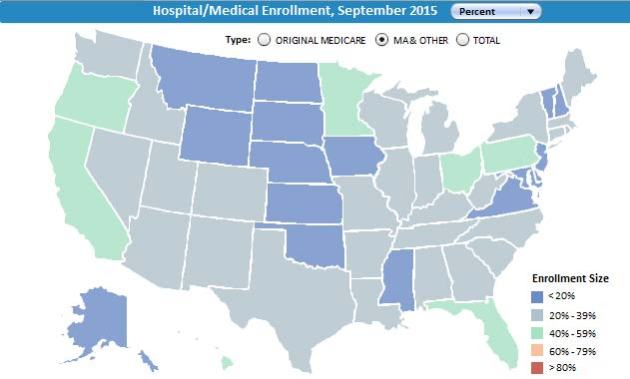CMS Updates its Quality Strategy to Build a Better, Smarter, and Healthier Health Care Delivery System
November 25
By: Patrick Conway, M.D., MSc, Acting Deputy Administrator and Chief Medical Officer, CMS
At the Centers for Medicare & Medicaid Services (CMS), we are working with public and private partners to build a health care delivery system that delivers improved care, spends health care dollars more wisely, and makes communities healthier. Our goal, set out by the Administration, is to shift Medicare payments from volume to value – tying 30 percent of traditional Medicare payments to alternative payment models and tying 85 percent of all traditional Medicare payments to quality or value – by the end of 2016. And, we are making progress.
Today we are sharing our updated 2016 CMS Quality Strategy (https://www.cms.gov/Medicare/Quality-Initiatives-Patient-Assessment-Instruments/QualityInitiativesGenInfo/CMS-Quality-Strategy.html), which incorporates this progress made in shifting Medicare payments from volume to value, since the last time we shared the CMS Quality Strategy in 2014. In addition, the updated 2016 version updates progress made on the payment reform initiatives as well as new requirements from the Improving Medicare Post-Acute Care Transformation Act of 2014 (IMPACT Act) and the Medicare Access and CHIP Reauthorization Act of 2015 (MACRA) legislation. The implementation of MACRA is a major opportunity to put a broad range of health care providers on the path to value through the new Merit-Based Incentive Payment System (MIPS) and incentive payments for participation in certain Alternative Payment Models (APMs).
This document guides the various components of CMS, including Medicaid, Medicare and the Center for Consumer Information and Insurance Oversight, as they work together toward the common goal of health system transformation. We hope that through the communication of the 2016 CMS Quality Strategy Update we continue to build support for and promote the CMS Quality Strategy so that our partners can align initiatives with key CMS desired outcomes.
The 2016 CMS Quality Strategy is built on the foundation of the CMS Strategy (https://www.cms.gov/About-CMS/Agency-Information/CMS-Strategy/), and the HHS National Quality Strategy (NQS) (http://www.ahrq.gov/workingforquality/). The main purposes of the 2016 CMS Quality Strategy update are to achieve the broad aims of the NQS and to apply the Administration’s strategy for shifting Medicare payments from volume to value:
- Better Care: Improve the overall quality of care by making health care more person-centered, reliable, accessible, and safe.
- Healthier People, Healthier Communities: Improve Americans’ health by supporting proven interventions to address behavioral, social, and environmental determinants of health and deliver higher-quality care.
- Smarter Spending: Reduce the cost of quality health care for individuals, families, employers, government, and communities.
The 2016 CMS Quality Strategy goals reflect the six priorities set out in the NQS and identify quality-focused objectives that CMS can drive or enable to further these goals:
- Goal 1: Make care safer by reducing harm caused in the delivery of care.
- Goal 2: Strengthen person and family engagement as partners in care.
- Goal 3: Promote effective communication and coordination of care.
- Goal 4: Promote effective prevention and treatment of chronic disease.
- Goal 5: Work with communities to promote best practices of healthy living.
- Goal 6: Make care affordable.
To meet these six goals CMS will:
- Measure and publicly reporting providers’ quality performance and cost of services provided;
- Provide technical assistance and foster learning networks for quality improvement;
- Adopt evidence-based National Coverage Determinations;
- Create incentives for quality and value;
- Set standards for providers that support quality improvement; and
- Create survey and certification processes that evaluate capacity for quality assurance and quality improvemen
Like the NQS, the 2016 CMS Quality Strategy was developed with the input of stakeholders, led by the CMS Quality Strategy Affinity Group under the CMS Quality Improvement Council (QIC). We made Affinity Groups to align and coordinate quality and value programs at CMS. The QIC ensures coordination, continuous learning, and the dissemination and spread of quality improvement activities across the agency.
Today’s release of the 2016 CMS Quality Strategy helps to align all of CMS to:
- Drive improvement on specific quality strategy goals and objectives.
- Strengthen our relationships within the agency.
- Build advocacy across HHS agencies.
We are excited to put the updated 2016 CMS Quality Strategy into action so we can do our part to transform health care.

